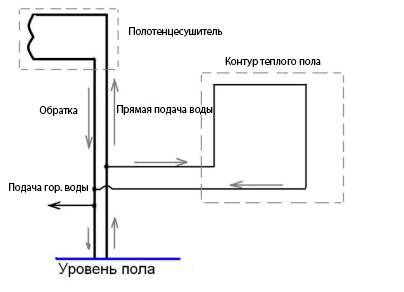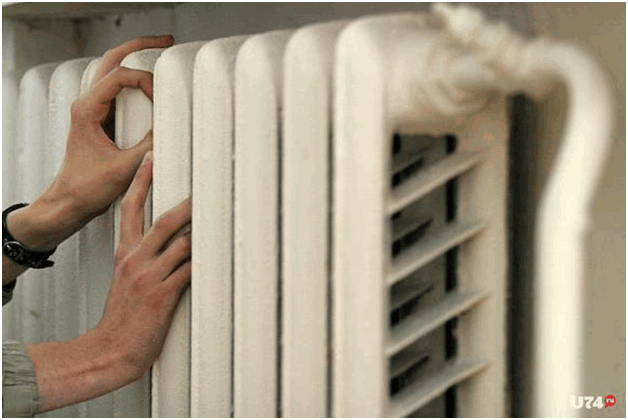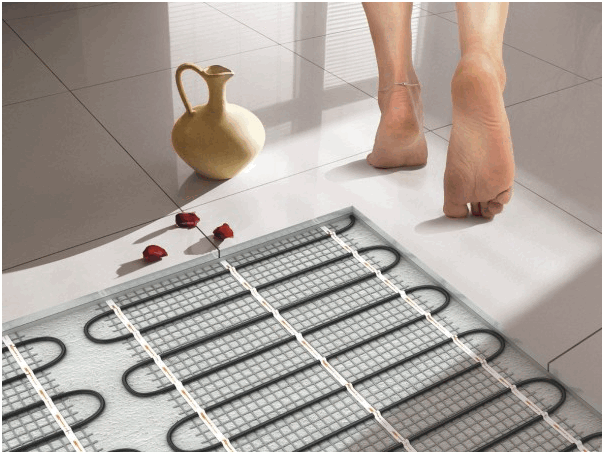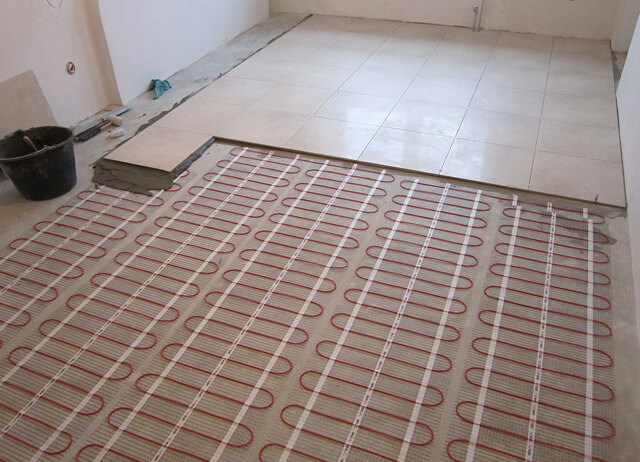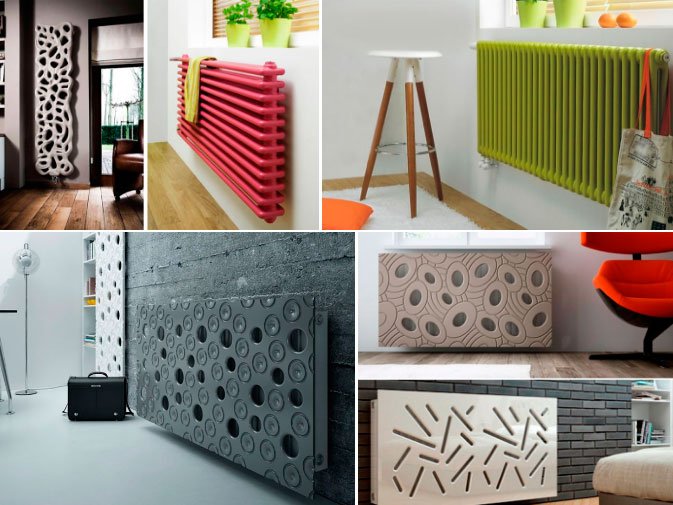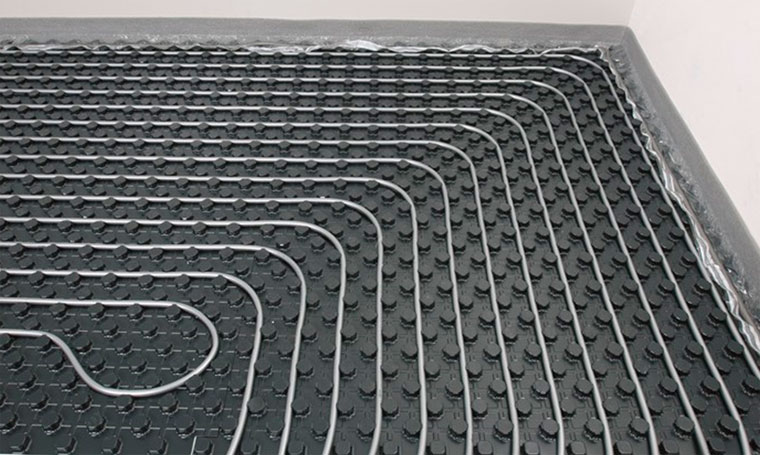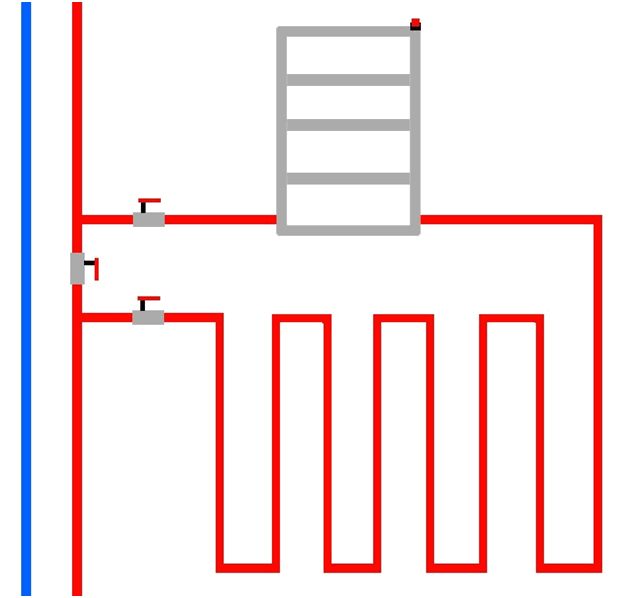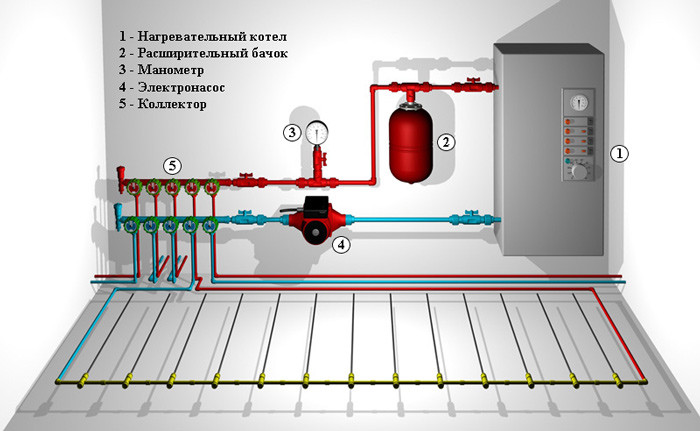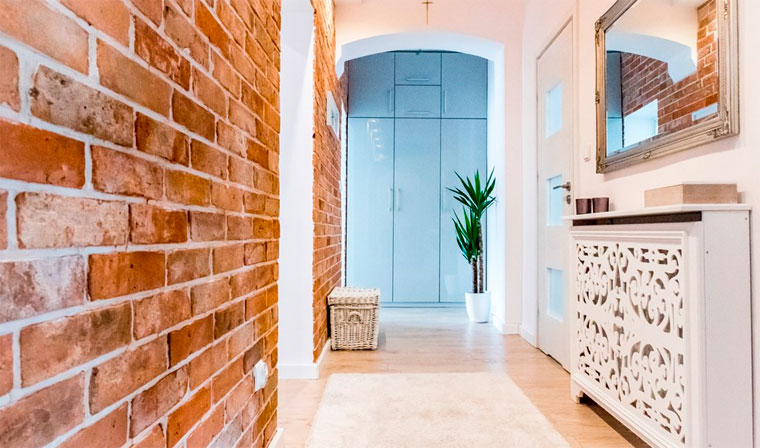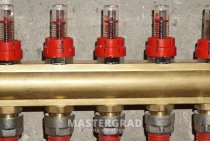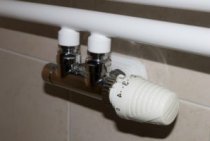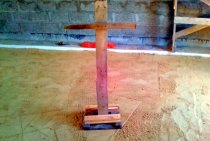What does the wiring diagram look like?
The option of connecting a heated towel rail in an apartment also determines the method of installing a warm water floor.
The acceptable temperature of the coolant allows the floor heating to work with maximum efficiency. However, there is one thing! At the end of the heating season, your coil will be cold and no use will come from a warm floor. This wiring diagram is not ideal.
Underfloor heating works better when connected to a heated towel rail connected to the hot water supply of the bathroom. Here you need to select a pipe for the water circuit of the correct diameter, accurately calculate the length of the pipeline, the heated area and choose the correct connection method. It is better to take metal-plastic pipes for a warm floor, with a diameter of 16 mm.
The installation process itself is quite simple and straightforward. All work consists in connecting (insert) to the main pipe (riser) of the water floor circuit. The new pipe will go to the floor, and return back to the coil. Be sure to install a starting valve at the tie-in point, with which you can adjust the flow rate, turn on and off your additional heating. This option is the simplest and cheapest, but provided that the pressure in the pipes is within normal limits.
Underfloor heating, as usual, is not much different from traditional practice. The water circuit pipe is laid into the substrate with a certain step. The bending radius of the pipe should be minimal to ensure the normal flow of the coolant throughout the system. If you cannot do with one circuit in the bathroom, you will have to use a collector. With this device, you can not only connect a larger number of water circuits, but also accurately regulate the water supply and the heating temperature of the heating floor. You can install a circulation pump for reliability, however, the profitability of your miniature heating system will be minimal.
Types of underfloor heating
Manufacturers offer several options for underfloor heating at once:
- Water;
- Infrared;
- Electric.
All of them can be installed in the bathroom. Each type has its own characteristics, advantages and disadvantages.
Water heated floor
The most popular option. Differs in safety during operation. Often it is introduced into the general heating system. Having an individual type of heating, you should definitely think about this technology. Work is carried out as quickly and simply as possible. Heat-resistant pipes are mounted, thermal insulation is created, a screed is poured and a finishing coating is laid. The main thing is that the power of the boiler, geyser or boiler allows you to supply the system with the necessary amount of water.
Alternatively, you can connect a warm floor to the central water supply. This will reduce the cost of electricity for heating water, but you will have to install additional equipment.
Infrared warm floor
Not as popular as the previous one. The system costs a lot of money, but the price is quite justified. It is desirable to install such a floor in rooms with a large area. So you can replace the standard heating. The infrared floor is considered an individual self-sufficient heating system. That is, no additional devices will have to be installed.
 An infrared floor is easier to install than other types of underfloor heating.
An infrared floor is easier to install than other types of underfloor heating.
Electric floor heating
The option is beautiful in that there are virtually no contraindications for operation. But, often it is necessary to significantly strengthen the wiring. Be sure to consult with a specialist first.An experienced electrician will develop a competent plan that will allow you to install the system and operate it without any fear. In no case should you carry out installation work yourself if you do not have the appropriate knowledge and skills. Additionally, you need to install a temperature sensor. The device will allow you to control the air temperature and adjust the system to work in the optimal mode.
Answering the question - do you need a warm floor in the bathroom, you can give a definite answer. This decision will be correct. There is nothing more important than health and comfort in the house. In the bathroom, which many associate with humidity, sometimes dampness, it will always be warm, comfortable and safe.
Don't forget to share the post on social media!
Connecting a warm floor to a battery
The floor line is connected to the supply or return circuit. This installation can be carried out in city apartments only with the permission of state bodies, therefore, such schemes are used only in private cottages.
- If one radiator is installed in the room, then a separate circuit is brought out from above it to the “warm floor”. A filter, an air tube and a circulation pump are installed on the pipe. It pumps the coolant into the water line.
- The other end of the line is connected to the radiator from below. The cooled coolant is removed from the battery through the return pipe to the boiler.
- The circulation pump is equipped with a thermal head or a servo drive. When the water temperature in the floor circuit rises, the pump stops working. Heating stops. Only radiator heating works.
Heated floors in the bathroom, electric or water
So, the electric floor is best laid in an apartment building. The solution does not require permits for installation. Laying requires less material costs and is faster.
Water floors are completely safe. Fire and short circuit are excluded. In an apartment building, their use does not carry an additional material burden.
For residents of apartment buildings, especially old buildings, from year to year, with the onset of the cold period, the same problem arises. We are talking about the quality of heating residential premises. Centralized heat supply, despite all its archaism, remains today the main option for heating the housing stock in almost all settlements and cities of our country.
Hot batteries in the house are not yet a sign that it will be warm and comfortable inside the apartment. Autonomous heating, underfloor heating in the apartment, heating methods that most of our citizens can only dream of. Apartment buildings, especially "Khrushchev" and panel high-rise buildings, due to their design features, are characterized by huge heat losses. Normally warming up a residential building with conventional radiators in severe frosts is a problematic task.
For this reason and for a number of others, residents are forced to look for ways to help solve the problem. One of the effective, relatively inexpensive and most practical options for additional heating is a heated floor from a heated towel rail.
Alternative Solution
If it is impossible to lay a warm water floor from central heating, then an electric version of this system comes to the aid of the owner. It is easier to mount it and you can do all the work yourself. The advantage is that in an apartment building, such a system does not upset the balance and is allowed to be used.
It is only necessary to take into account the power of such a system so that there is no overload of the electrical network. Spatial electric floor heating takes up much less space, which makes photos of the room more aesthetic and anyone entering the apartment will not suspect that something is wrong with the floor.
At the legislative level, electric heating is allowed and can be applied at any time of the year, while the water floor is dependent on the seasonal supply of hot water. Accordingly, it can function only from autumn to spring - the heating season.
Features of the arrangement of electric and infrared floors
Electric underfloor heating is also often used in the bathroom if there is a need to lay tiles. So, in this case, the process provides for the following sequence of work:
- Pouring a rough screed, with which the base is leveled.
- Laying of heat-insulating material with a reflective layer.
- Installation of reinforcing mesh. This is where the cable will be attached to.
- Heating cable installation. Please note that metal clamps should not be used to fix it. It is necessary to lay out the cable exactly according to the previously drawn diagram.
- Installation of a thermostat. At the same time, please note that it should be located at a height of about 0.8-1 m from the floor.
- Test run of the system. At this stage, the resistance of the structure is checked. If possible, it is necessary to find the foci in which the closure occurs. If they are not, you can continue to work.
- Screed filling. In this case, its thickness is at least 5 cm.
- Additional performance check. That is, you again need to measure the resistance in the system.
Should not have voids. In addition, it should be reinforced with fiberglass. Only in this case you can avoid its subsequent destruction under the influence of temperature differences.
Installs the fastest. Its distinctive feature is the absence of the need for arranging a screed. That is, the tiles can be laid directly on the film. Such a warm floor just needs to be spread according to the scheme. It must be taken into account that the heating elements should not end up under heavy pieces of furniture. Otherwise, local overheating will occur, and the warm floor will fail.
It is important to correctly connect and insulate the infrared system. You should also take care of the correct installation of the sensor and thermostat
After checking the performance of the structure, you can lay the tiles.
That's all the features of arranging underfloor heating in the bathroom. Be careful when installing. Leave your comments on the article and finally, a video about the technology of laying heating mats:
In recent years, floor heating technology has become popular in ordinary city apartments. Underfloor heating from a heated towel rail is a budget option for a heating device, which is used in cases where the installation of a boiler is impossible for some reason.
The scheme for connecting a heated towel rail to the central heating system has a number of varieties, it is from the existing scheme that you need to build on during installation. In some apartment buildings, heated towel rails are powered from the “return” of the heating system. This option implies a fairly low temperature in the riser and heated towel rail, and in the summer, during periods of heating shutdown, the pipe cools down completely. It is better to refuse the idea of installation in such houses, the system will not function correctly.
Another option is to power the heated towel rail from the hot water in the bathroom. In this case, the heating circuit will work much more efficiently, but at the same time it is necessary to correctly calculate the cross section of the pipe, measure the area and correctly connect the water floor itself. The metal-plastic pipe should be of a smaller diameter than the riser, most often the best option is D16. The water floor requires special attention during installation, especially if the installation is done by hand.
Do-it-yourself ways to connect a warm floor with your own hands are quite simple; through the main hot water riser, an additional tie-in is made to the floor heating circuit. The pipe goes to the floor and returns to the heated towel rail.A control valve cuts into the riser, with which you can dose the hot water supply through the riser directly. The main flow is assumed to be through the floor contour in the room.
The floor pipe is mounted on the substrate, the bending radii should be minimal so that the flow resistance is not critical. Such a floor in the bathroom will only work with good pressure in the pipes.
To connect several circuits of a warm floor to a hot water supply system, a collector is used, through which it is possible to regulate the supply of hot water to each circuit separately, sometimes the system is supplemented with a pump for circulation, but such options can be cost-effective only in large apartments and use in more than one room.
- economy in use;
- durability with proper installation.
Benefits of classic radiator batteries
Standard radiators also have a number of advantages:
First of all, they can quickly heat up a room with poor thermal insulation and do not need any auxiliary heat sources. A warm floor needs several hours, while a convector heats up a room a few minutes after it is started.
Secondly, battery installation is much faster and easier.
For example, when replacing the heating system in an old house, you do not have to tear off the floor covering.
Equally important, the batteries will perform much better in rarely used rooms, as well as in rooms where most of the floor surface is hidden by various types of equipment and furniture.
The next aspect to note is the wood floors. According to statistical studies, wood is still a very popular and often chosen material for flooring.
It turns out that precious woods, especially thick ones, are an excellent heat insulator. This means that on a warm floor, wood will significantly reduce its effectiveness. In addition, wooden floors are extremely sensitive to changes in humidity and temperature - boards expand and contract under the influence of these factors. In this case, heated floors can lead to the destruction of the wooden floor - its matting, deformation and the formation of unaesthetic gaps.
Therefore, people who love beautiful wooden floors should opt for classic radiators.
The fact that designers do not ignore radiators makes them more and more popular. According to demand, manufacturers every year offer batteries that are more attractive in appearance.
Thus, heating radiators for the home are becoming more and more interesting - you can find models as geometric sculptures, as well as options in vibrant colors. On the market, you can also find decorative grids for the battery. which can be an interesting interior element and hide an old and ugly battery.
Foundation preparation
Before making any underfloor heating, it is necessary to prepare the base in advance. To do this, you need to dismantle the old tile. Try to eliminate all adhesive residues, repair possible cracks and cracks. If necessary, make a rough screed. Next, it is necessary to equip a layer of protection against moisture penetration: roofing material, plastic wrap or apply a coating.
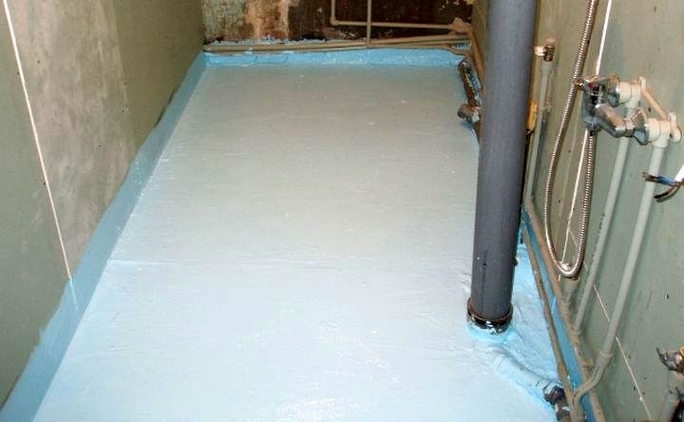
After that, the base is insulated. This can be done with polystyrene foam. If there is a layer of foil on it, then it should be at the top. If not, then the reflector spreads separately.
Next, you need to mount the reinforcing mesh. It will not only help strengthen the cement screed, but will also become the basis for fixing pipes (cable). The thickness of this material is 3-4 mm, and the cell size is 10x10 cm.
Disadvantages of underfloor heating
- Higher installation cost.Unfortunately, installing underfloor heating means higher costs – sometimes the cost of such a solution is 50% -60% more expensive than traditional radiators. In this case, you should not save money on specialists. An unprofessional master can make significant mistakes, for example, when laying insulation, and also not take into account the thermal expansion of materials, which can lead to unpleasant consequences, up to cracking the floor surface.
- Not all floor coverings are suitable for underfloor heating. It should be taken into account that each material is different and has different thermal conductivity. Thus, in order for an underfloor heating system to be effective, it is necessary to find out what kind of underfloor heating floor covering is suitable even before the installation stage. and decide which option is right for you. If you choose this heating option, it is best to install finishing materials with good thermal conductivity, such as ceramic tiles, on the floor. You can also use laminate with a certificate that says it's suitable for underfloor heating. It is not recommended to use thick carpets and other materials that reduce thermal conductivity.
- Thermal inertia. The aforementioned thermal inertia can also be a disadvantage of underfloor heating. Concrete accumulates a large amount of heat, in connection with this, the inertia of the warm floor is large. It responds slowly to changes in temperature settings. Since the heating surface is very large and largely insulated evenly, it is difficult to cool it quickly. It can take up to several hours for the temperature in your home to drop significantly.
- Another disadvantage is that underfloor heating is only suitable for houses with very good thermal insulation. If the building does not have such insulation, it is worth installing a so-called mixed heating system, which combines underfloor heating and classic radiators.
- Difficult troubleshooting. In the event of a breakdown of the underfloor heating, for example, a pipe break, you will have to remove a section of the floor. This includes dusty work for 2-3 weeks, as you will have to wait for the concrete needed for installation to dry. However, the chance of pipe damage is negligible.
Principles of operation of the heating system
Such a connection option does not represent technical complexity. The heated towel rail is a heating device installed in almost every city apartment. From a constructive point of view, this is an external communication element through which the hot coolant or hot water of the DHW system circulates. Such elements are often placed as a compensating loop of the heating system, playing the role of an additional source of heat in rooms with high humidity. The name of the element speaks for itself, hence the serpentine shape, thanks to which the heated circuit can be effectively used.
For aesthetics, towel warmers are usually made of stainless steel or plated with nickel. The very design and method of connecting the heated towel rail to centralized communication make it possible to connect a water floor pipe to it without much difficulty. As a rule, pipes of small diameter are used for underfloor heating. For a bathroom, the area of \u200b\u200bwhich rarely exceeds 4-5 m 2 in a city apartment, only 15-20 meters of pipe will be required.
There are two types of heated towel rails:
- a coil that is connected to a centralized heating system;
- coil, which is connected to a centralized hot water supply.
In the first case, with the onset of the heating season, water fills the heated towel rail and, accordingly, enters the underfloor heating circuit, heating the floor surface.
The first option works only during the heating season.The rest of the time your warm floor will be inactive. A coil connected to the DHW system looks preferable. Such a floor in the bathroom will always work, providing a good microclimate and a comfortable temperature.
floor heating
The heating system "warm floor" is mounted quickly. If plastic pipes are used, then installation takes place in a few hours. It does not generate a lot of dirt during operation. The system has its own advantages.
- Efficient space heating. Warm air rises from the flooring and from the interior items up. On the floor, the temperature is higher than near the ceiling. There is no need to lay carpets, wear warm indoor shoes.
- Air turbulence is not formed, dust does not rise, for people who suffer from bronchial diseases, the “warm floor” is a more favorable heating system.
- The floor temperature does not exceed 25 0С. Humidity remains normal.
- No radiators in the room.
However, underfloor heating is used both as a primary and secondary means of heating. The owner of the cottage independently decides which system to choose, underfloor heating or batteries.

The water floor line is removed from the boiler. The circuit is connected to the supply and return manifolds. The comb is connected to the outlets in the boiler.
A circulation pump is connected to the return circuit, with three-way or two-way valves. They are equipped with thermostats with temperature sensors. The heating system functions automatically.
Warm floor after all radiators.
They send a decision. 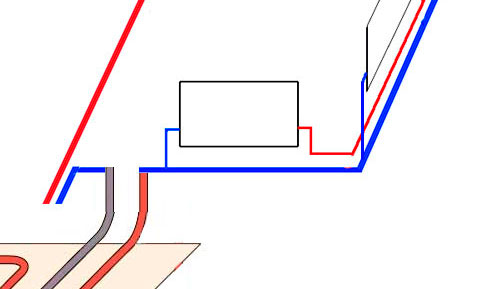
Let's go back to the first option, but let's try to somehow lower the temperature.
There are two approaches here: what exactly we will regulate.
Preparing for installation
When installing the structure with your own hands, you need to pay special attention to the materials; laying metal-plastic in an apartment involves using only high-quality pipes that will not break at high pressure in the bathroom. Threaded inserts should be made using reinforced fittings
The shut-off valves must be of high quality, and each node must be able to independently shut off and circulate water using a bypass. You can do the work yourself with the skills and experience of such work, otherwise it is better to seek qualified help.
Connecting a heated floor to a heated towel rail
The idea of using centralized heating as the main source of heat for the operation of other heating systems in the apartment is not new. Using massively electric household heaters to create a comfortable temperature in an apartment is a costly exercise. Insufficient thermal efficiency of residential premises causes high costs for additional heating. Underfloor heating in this regard is the most effective way of heating. For private houses, this heating scheme is real and feasible, but for city apartments, the legality of this engineering and technological solution comes first.
The main reason for the ban is that inserting additional heaters into the central heating system can adversely affect the quality of heating in neighboring apartments.
The incompatibility of operating parameters calls into question the combination of a centralized heat supply system with a heating pipe laid in the floor. If we omit the legality of this engineering solution in this situation, heating engineers speak negatively about the idea of using a heating plant for underfloor heating. The poor quality of the coolant and the high probability of water hammer makes such a technical solution a problem area in the apartment. It’s a completely different matter when it comes to heating a limited area in your apartment.
For example: a bathroom, toilet and other rooms are in dire need of additional heating. Install a heated floor in the bathroom, which will be connected to a heated towel rail, a task that you can handle on your own. Calculations and expenses in this case do not play a key role. A small area and small amounts of work allow this heating method to be used in a city apartment without harming neighbors.
Features of water heated floors in the bathroom
Scheme-example of connecting a water-heated floor.
To carry out the installation of water floors in the bathroom, under the coating or on the subfloor, a pipe of the required diameter is laid. The pipe, as already mentioned, can be in the form of a snake or a spiral. Hot water will be supplied to the pipe from the boiler of the gas heating system or the central heating system. It should be noted that it is still more convenient to use a pipe laying in the form of a snake, because. in this case, the supply and return are carried out in parallel. As a result, the cooling of one sector will always be compensated by the heating of the other.
By opting for such a warm floor for the bathroom, you will ensure the safety and environmental friendliness of the heating system. In addition, you will have the opportunity to save on the operation of the device.
It must be remembered that the installation and installation of underfloor heating systems is quite laborious and complex work, so you will have to pay quite a lot for it. In addition, do not neglect the quality of water, which can also significantly affect the degree of heating in the pipes of the system.
Is it possible to make water floors in the bathroom
Neighbors' complaints about the decrease in heating intensity are the rationale for initiating a lawsuit, which will result in an administrative penalty and an order to eliminate the changes in a short time.
On this basis, the legality of installing underfloor heating in an apartment building is dubious at best. The Housing Code allows you to change the design and layout of the heating system, but after obtaining the necessary permits and coordination with the relevant authorities. In any case, registration should begin with a visit to the housing and communal services.
Connecting a warm heated floor in the bathroom from a heated towel rail is one of the most commonly used solutions for heating a bathroom in a high-rise building
At the same time, it is extremely important to ensure that the heating temperature of the neighbors does not decrease. A two-way valve can be used for this.
Disadvantages of conventional radiator batteries
Fortunately, radiators have far fewer disadvantages than advantages.
- The biggest one is the unfavorable temperature distribution in the room. Unlike underfloor heating, in a room heated by batteries, most of the warm air rises. Unfortunately, in this case, the heat is at head level and above, and the coldest area in the room is at our feet, which is not conducive to comfort, but contributes to hardening. Of course, this is not the best solution in a house where there are small children who spend a lot of time not standing, but sitting on the floor. In this case, you will have to think about buying carpets or carpets.
- In addition, radiators do not contribute to the well-being of people with allergies. According to research, the phenomenon of convection, that is, an increase in air movement, also increases the movement of dust particles, and with them unhealthy dust mites.
- In addition, intense heat dries out the air, which can lead to discomfort and dryness of the nasal mucosa. Therefore, in the autumn-winter period, dust cleaners and air humidifiers should be used. which will greatly reduce these problems.
- You also need to know that radiators can only work with high-temperature boilers and water heating systems. Underfloor heating, on the contrary, works with low-temperature heat sources, such as, for example, a condensing boiler. heat pumps and solar collectors.
“Tastes differ,” says the well-known proverb. In the same way, it is not worth arguing about what is better than batteries or underfloor heating. For each of us, completely different solutions can be the best. In order to choose the right one, which is better between batteries and underfloor heating, it is necessary to carefully analyze not only the advantages and disadvantages of both solutions, but also financial opportunities. In addition, the type and nature, thermal insulation of the building in which this or that heating system will be placed are important. Only a thorough, comprehensive analysis will help you make the right decision and enjoy a cozy atmosphere in the winter.
